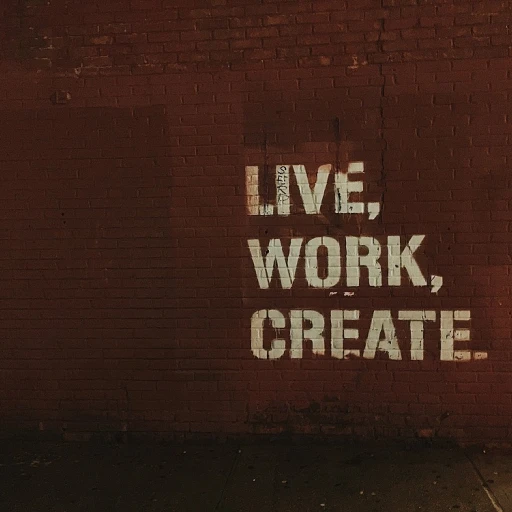
The importance of a well-designed career page
Setting the stage for your company's story
Your career page is the front door of your company for potential hires. In fact, a study by Workable found that 76% of job seekers visit the company’s career page before applying. This highlights how vital it is to make that first impression count.
Initial impressions shape perceptions
A well-crafted career page can significantly influence the way top talent perceives your brand. It's not just a list of vacancies; it’s a holistic presentation of what working with you feels like. A Gallup survey mentioned that over 70% of job seekers regard a company's website as a key factor in their job search experience.
Attracting the right talent
By clearly showcasing your company's culture, values, and benefits, you can attract candidates who align with your ethos. For instance, Google’s career page includes employee testimonials, videos of office life, and detailed descriptions of their work culture, making it easier for candidates to resonate with the company.
Competitive edge in the hiring market
A compelling career page sets you apart from competitors. According to research by CareerBuilder, 60% of candidates have quit filling out applications due to its length or complexity. Your career page should simplify this process, making it engaging and informative. Companies like HubSpot have streamlined application processes directly on their website, leading to higher completion rates.
Key elements to include on a career page
Essential info about who you are
Your career page needs to deliver the goods on who you are as an employer. It’s not just about slapping your logo on top. Share your brand story and let potential recruits see the heart of your company, much like Microsoft does. Mention your values, culture, and what makes you different. According to LinkedIn, 75% of job seekers consider an employer's brand before applying for a job. This bit of your page helps shape their impression.
Job descriptions that don't snore
A big yawner for candidates is a robotic job listing. Stick to clear, engaging job descriptions. Highlight the role's key responsibilities, necessary skills, and why the job is awesome. Glassdoor found that clear, understandable job titles can lead to a 7% increase in applications.
Testimonials that tell your story
Nothing speaks louder than real employees giving a thumbs up for your company. Incorporate testimonials to show your work environment. Adobe, for example, showcases snippets of employee stories on their career page, helping to build credibility and attract more candidates.
Transparency in the hiring process
Be upfront about your hiring process. Lay out the steps from application to interview to onboarding, and introduce the team they might be working with. A study by Talent Board reveals that 82% of job seekers cite clear communication of the hiring process as a critical factor in forming a positive impression of a company.
Growth paths that motivate
Top talent wants to know they can grow with you. Highlight opportunities for development and promotions. Google's career page does this well by showcasing various career paths and success stories.
Relevant benefits and perks
Explain the benefits of working at your company. Don’t just list the typical perks like health insurance and 401k. What makes working with you special? Do you offer remote working, flexible hours, or unique wellness programs? Buffer prominently displays their remote-friendly policies and transparent salary model, making them attractive to a global talent pool.
Application process that’s a breeze
Finally, keep your application process straightforward. A clunky application system can turn away candidates. According to a 2020 study by Appcast, businesses can boost conversion rates by up to 365% when they reduce the length of their employment application to 5 minutes or less.
Navigating the complexities of compliance
Ensure your content adheres to legal requirements and industry standards. Cover points like equal opportunity employment and data privacy practices. IBM’s career page offers a shining example of how to maintain compliance while remaining engaging.
The role of user experience (UX) in career page design
User experience is more than just a buzzword
When it comes to career pages, the user experience (UX) is paramount. It's not just about aesthetics; it’s about how effortlessly potential employees can find and understand the information they need.
According to Nielsen Norman Group, 88% of users are less likely to return to a site after a bad user experience. So, if your career page isn’t user-friendly, you’re not just losing visits; you’re losing potential talent.
Streamline the application process
Imagine looking for a job and stumbling upon a complex, multi-step application process. Frustrating, right? Simplification is key. Almost 60% of job seekers abandon online applications due to their length and complexity, according to Indeed research.
One successful approach can be seen in Netflix’s career page. They’ve streamlined the process by asking only for the essentials upfront, reducing the initial time commitment for applicants.
Personalize the journey
User experience on your career page should feel personalized. Companies that provide a tailored experience see increases in engagement and retention. Oracle found that 80% of consumers are more likely to make a purchase when brands offer personalized experiences. Although this data is consumer-focused, the principle holds true in recruitment.
Use dynamic content to show job seekers relevant roles based on their skills and interests. For example, LinkedIn’s career page utilizes users’ profile information to suggest roles that match their experience, making the job search process far more intuitive and efficient.
Testimonials and success stories
It's one thing to boast about your company culture, but letting your employees do the talking is far more impactful. Integrating testimonials and success stories can significantly enhance user experience. As noted by HR Exchange Network, 92% of people trust recommendations from individuals (even people they don't know) over brands. Showcase real stories from current employees to build credibility and trust.
Accessible for everyone
Accessibility is sometimes overlooked but it's crucial for a positive user experience. Make your career page compliant with WAI's Web Content Accessibility Guidelines (WCAG). Simple adjustments like alt text for images, keyboard navigation, and text-to-speech options can make a world of difference.
Incorporating SEO strategies in career page content
Crafting content that ranks
Creating content for your career page that is optimized for search engines is like setting up a treasure map for potential candidates. They need to find you easily, so every word matters. Think about integrating primary keywords naturally within your content. Let's say you're hiring software developers in Austin; your content should reflect key phrases like 'software developer jobs in Austin' or 'tech careers in Austin'. This helps search engines connect the dots between what candidates are searching for and your job postings.
Using the right headings
Headings and subheadings are your best friends for SEO. They not only make your content easy to read, but they signal search engines about the priority of information. For instance, using a clear, keyword-rich H1 tag like 'Join our team of expert software developers' gives both users and search engines a precise idea of what the page is about. Remember, each section of your career page should be logically structured with H2s, H3s, and so forth.
Meta descriptions matter
Don't underestimate the power of meta descriptions. These short snippets appear under your page title in search results and can significantly impact click-through rates. They should be compelling, concise, and keyword-rich. For example, a meta description for a career page might read: 'Explore exciting career opportunities in software development at [Your Company]. Join our dynamic team in Austin and take your career to the next level.'
Making job postings keyword-friendly
Each job posting is a mini SEO challenge. Job titles should be clear and include relevant keywords (e.g., 'Senior Software Developer'). The job descriptions should naturally incorporate keywords related to the role’s responsibilities, required skills, and location. For example, if a position requires experience with JavaScript and React, these should appear in the description several times.
Internal linking boosts visibility
Enhance your SEO by strategically placing internal links throughout your career page and website. Link to related job openings, company culture blogs, or testimonials. It keeps visitors on your page longer and helps search engines index your site more effectively. For example, within a job posting, you could link to a 'day in the life' blog post or an employee testimonial to provide deeper insights into the role.
Utilizing multimedia to enhance the career page
Bring your career page alive with multimedia
Imagine landing on a career page and being greeted with just text. While it's informative, it might lack the engagement factor. Multimedia changes the game here. Research by CareerBuilder shows that job postings with images or videos receive up to 34% more applications compared to those without.
Videos stand out as the most impactful form of multimedia. One notable example is HubSpot. They use employee testimonial videos to break the ice and provide a genuine peek into the company culture. This not only attracts potential candidates but builds trust. According to Glassdoor, 75% of job seekers consider an employer's brand before even applying for a job.
Infographics and interactive content can also make your page pop. Instead of monotonous text, using visuals to explain your company's benefits, culture, or career progression can make the information more digestible. LinkedIn's Job Seeker Trends report highlights that 61% of job seekers find company culture an essential aspect of job descriptions.
What the experts say
According to Joe Smith, a talent acquisition expert at Indeed, “Incorporating multimedia elements into your career page is not just a trend; it's a necessity. In an age where digital content consumption is at its peak, candidates expect more than just plain text.”
Real-life examples
Take Google for instance. Their career page is decked out with vibrant videos showcasing employee stories, office tours, and even snippets of work culture. This approach has solidified their position as a dream destination for many job seekers. Facebook also utilizes similar methods, emphasizing team collaboration and innovation through visually appealing content.
Embedding multimedia effectively
When adding multimedia to your career page, ensure it doesn’t slow down the page load time. A slow page can deter applicants. Multiple studies, including one from Akamai, reveal that a 2-second delay in load time results in abandonment rates of up to 87%. Tools like video compressors and reliable hosting platforms can help maintain speed.
Tying it all together
Multimedia is an excellent way to complement the design elements and SEO strategies discussed in other parts of your content. By weaving in engaging, clickable visuals and videos, you keep the user hooked, making them more likely to explore and eventually apply. Stay ahead of the curve and keep refreshing your multimedia content to stay relevant and engaging.
Mobile optimization for career pages
Prioritizing mobile-friendly design
When was the last time you opened a website on your phone and had to pinch in and out like a DJ manipulating records? It's annoying, right? Especially when you're job hunting. Importance of mobile optimization is sky-high nowadays since 60% of job applications come from mobile devices, according to Glassdoor.
The must-have responsive elements
First off, your career page needs to adapt seamlessly to everything from a smartphone to a tablet. That means no weird text overflow and definitely no tiny, unreadable fonts. According to a 2022 Statista report, 87% of job seekers consider a company's career page the most critical factor when deciding to apply. So yeah, make it pretty.
User interface (UI) optimization
Speed is the name of the game. Google recommends pages load in under 3 seconds. Elements need to be crystal clear and navigation should feel like a breeze. Google's PageSpeed Insights tool is your friend for identifying areas of improvement.
Click-through rates and user behavior
You can't optimize what you don't measure. Keep an eye on your mobile bounce rates and click-through rates. For example, according to a HubSpot study, 47% of users expect a page to load in 2 seconds or less before they decide to bounce.
Integration of mobile-friendly multimedia
Think of the last time you watched a video on your phone and it took forever to buffer. Tiring, right? Integrate mobile-friendly multimedia. Formats like MP4 for videos and SVGs for images load quicker and give a richer experience. Forbes pointed out that engaging multimedia could increase application rates by 34%.
Real-life example: Starbucks
Let's talk about Starbucks. They nailed the mobile career page. Clean design, fast load times, and an intuitive UI. The result? A steady flow of applications from mobile users, confirmed by a LinkedIn case study.
Test and adapt
Finally, mobile optimization isn't a one-time task. Regularly test different devices and network conditions to make sure your career page performs well across the board. After all, nothing says 'we care' more than a smooth mobile experience.
Monitoring and analyzing career page performance
Keeping an eye on the numbers matters
If you want to know how your career page is performing, the numbers tell the truth. Start with metrics like page views, bounce rates, and conversion rates. According to a study by CareerArc, 91% of candidates think employer brand plays a big role in their decision whether to apply. So, by tracking these stats, you can figure out if you're attracting folks or losing them along the way.
The tools of the trade
Google Analytics is a powerhouse for checking what's happening on your page. You can see where visitors come from, how long they stay, and what buttons they click. Another solid option is Hotjar, which offers heatmaps showing where users are clicking, moving, and scrolling. In May 2022, HubSpot revealed that 60% of businesses saw an improvement in engagement after using heatmap tools. These insights can help refine what’s working and fix what’s not.
Candidate experience feedback
Don't ignore the feedback straight from the horse’s mouth. Ask for reviews from candidates about their experience. Was it easy to navigate? Did they find the answers they needed? According to Glassdoor, companies that had positive candidate experiences improved the quality and quantity of applicants by 50%. This direct feedback can be priceless in tweaking your approach.
Dive into the details with regular reports
Set up regular reporting intervals—weekly, monthly, or quarterly. Use these reports to track your progress over time. For example, LinkedIn found that companies doing quarterly performance reviews saw a 15% increase in consistency and quality of job applications. Consistency is key, so stay on top of it.
Case study: Airbnb's winning strategy
Take Airbnb. They revamp their career page based on performance metrics continuously. They noticed a 34% uptick in applications by making it super user-friendly and packed with the right content. They have a detailed section for company culture, job specifics, and a streamlined application process—stuff they've fine-tuned over time from constant performance checks.
Don’t get stuck—adapt and improve
The job market and candidate preferences shift constantly. By monitoring your career page’s performance, you’re laying the groundwork for improvements. A staffing survey by Bullhorn said that active monitoring and adaptability can boost hiring efficiency by 40%. Keep up with the data, and you’ll keep drawing the right talent.
Continuous improvement: keeping your career page up-to-date
Keep up with trends and feedback
To stay competitive, it's essential to keep your career page fresh and relevant. Take a look back at your analytics and user feedback to identify areas needing updates or enhancements. Metrics like page views, bounce rates, and application conversion rates tell you a lot about what's working and what's not.
Get insights from your current employees
Your current employees are a treasure trove of information for improving your career page. Regularly conduct interviews or surveys to gather their opinions and suggestions. What did they find appealing or confusing during their own job search? Make these insights actionable by integrating their feedback into your updates.
Showcase updated company achievements
Don't forget to highlight the latest achievements and milestones of your company. Be it awards, partnerships, or successful projects, showcasing this information not only makes your page visually dynamic but also helps improve your employer brand.
Refresh multimedia content regularly
Trust me, stale content is a turn-off. Constantly update your multimedia content, including videos, images, and employee testimonials. Strong visual storytelling can be a huge hook for potential candidates. If you've recently completed a significant project or celebrated an event, share those moments!
Keep your SEO game strong
SEO is not a one-and-done task. Regularly review and update your career page’s SEO strategies. Refresh keywords, meta descriptions, and alt texts to make sure your content stays discoverable. Trends in job search terms change, so your SEO strategy should too.
Maintain mobile optimization
Just because your career page was mobile-friendly three months ago doesn't mean it still is. Regularly test your page on different devices to ensure a smooth and engaging mobile experience. Don't forget, a significant portion of job seekers are using their phones!
Make small adjustments over time
Continuous improvement doesn't mean you have to overhaul your page every few weeks. Small, incremental changes can make a huge difference over time. Focus on areas with immediate impact first, like loading speeds or broken links, and take bigger steps gradually.
Maintaining your career page as an evolving resource boosts your employer brand and improves candidate experience. Keep it fresh, relevant, and engaging to stay ahead.



